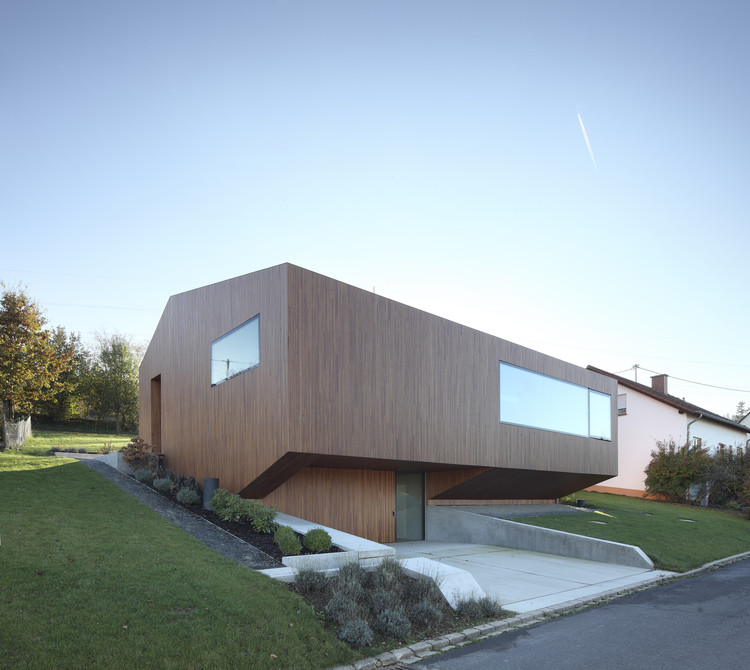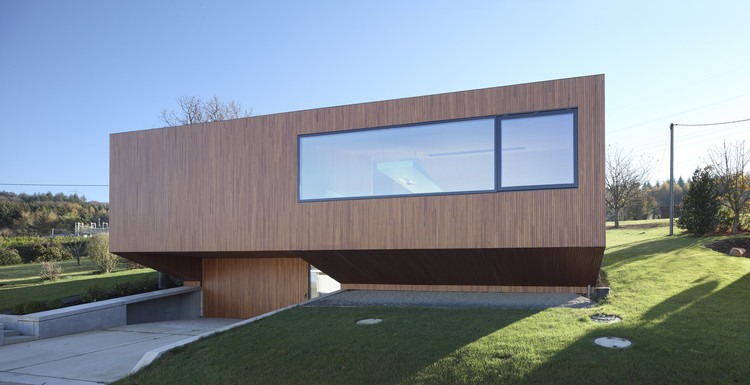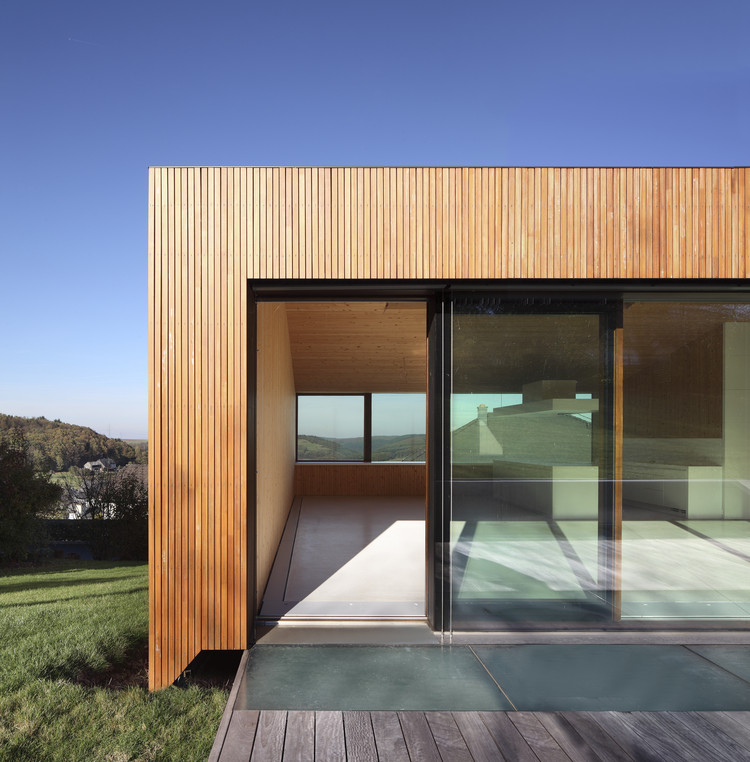
-
Architects: Architekten Stein Hemmes Wirtz
- Area: 317 m²
- Year: 2011
-
Photographs:Eibe Sönnecken

Text description provided by the architects. The +Energy House lies down as a flat structure on the sloping site and forms at the upper floor a platform that connects inside and outside together and offers a magnificent view of the countryside. The formal language acts independently and confidently. Simultaneously, the two-storey construction comunicates with the surroundings of the street (building line, roof shape, eaves height).

The house was created as a mixed construction: concrete construction on the ground floor, solid wood construction upstairs. The construction with dowelled laminated timber elements could be entirely built without glues (clients request: pollution-free construction, ecological building materials). The surfaces remain aware undisguised.

Beside its static funcion, this inner shell ensures a balanced room climate. The wooden wall has a heat storage capacity that comes close from that of conventional masonry structures. According to the passive house standard, a layer of insulation (wood fibers) surrounds the construction upstairs. The airtight, thermal-bridge-free trained, heat-insulated shell is made up of the bottom plate (foam glass gravel).

The facade of the first floor is tightly butted with profiles from Siberian larch, a by-product from the production of window profiles, that here was recycled. On the south roof are located photovoltaic modules. This additional component of the passive house can be used as +Energy House.

The building has a ventilation system with heat recovery. The result is a cozy space (apartment on the ground floor, main house upstairs) that benefits from the simple, hand-crafted details, but especially from the view through huge windows. The most spectacular view opens up a large window to the north, what was the greatest challenge in terms of passive house construction. The north oriented openings in passive houses are ideally keep low to reduce heat loss, so here, instead the triple glazing solution of the other windows, a window has been designed and built with quadruple glazing. In addition, all windows are glass-on-frame constructions, making them appear frameless, and are mostly installed flush on the outside, so they act as an inlay in the wooden structure and emphasize the shape of the building.

In addition, technical innovations have been tried as prototypes - concrete sandwich panels with vacuum insulation, geothermal heat pump - and were also tested for its utility for other construction projects.























